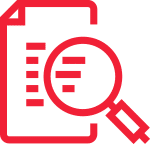Menu
NFT Piracy and the Digital Millennium Copyright Act
April 15th, 2022

As we’ve explained in previous blogs,
An NFT is a type of cryptocurrency asset wherein each item, or token, is unique. It is not easily exchangeable for another value or item. An NFT is also a digital certificate of ownership for any designated digital asset. It is like a smart contract written by assembling parts of open-source code found in platforms such as GitHub. The written code is then permanently published into a token on a blockchain.
An NFT is not itself a form of intellectual property (IP), and it doesn’t convey intellectual property rights. It’s more akin to a receipt for something held in a digital vault.
As the New York Times recently noted,
Every NFT, or non-fungible token, has a distinct serial number, and the transaction history of each NFT is stored on the blockchain, so people can see who the real owner is.
Some people have made significant money investing in NFTs.
As the Times reported, Izzy Pollak bought Bored Ape NFTs in the spring of 2021.
Last fall, several months after he had bought his first NFTs, Mr. Pollak’s apes skyrocketed in value. He sold one that he had bought for approximately 14 Ether (a virtual currency that was worth about $40,000 on the day of the purchase) for around 70 Ether (approximately $231,000 on the day of sale).
He used the money for a down payment on a three-bedroom house in Los Angeles with a backyard.
According to Forbes,
NFT’s historical sales volume has reached $41 billion, most of that since last August, up from just $74 million at the beginning of 2021. To put this into perspective, the global art market had total sales of $50 billion in 2020.
NFTs can be considered more of a gamble than an investment. As Forbes notes,
From an investment perspective, NFTs also appear to be a fad, a replacement for meme stocks for hyperactive traders, more like Beanie Babies than a new investment asset. After all, Robinhood Markets, Inc. gamified the trading of stocks and options; NFTs take this one step further with the gamification of the actual investments. This seems a likely conclusion since most NFTs trade off their social media attention, just like meme stocks. For all these reasons and more, the future of NFTs as an alternative investment class does not look good.
Also, just like physical artworks can be forged, so can NFTs.
As The Verge reports,
Plagiarism and fraud have been an issue since NFTs exploded in early 2021, but something shifted last fall, according to NFTTheft, a collective of artists highlighting fraudulent listings. (“You follow us if you basically want to live in hell and know how bad things are,” NFTTheft’s administrator, who asked to remain anonymous due to fear of doxxing and backlash from crypto-evangelists, told The Verge.) Where before artists saw a few thefts a day — an annoying but manageable number to file takedowns for — suddenly artists were seeing dozens, hundreds, or thousands of thefts…
For example, OpenSea is one of the largest NFT marketplaces. However,
OpenSea allows the creation of NFTs using “lazy minting,” where users list NFTs for sale without writing them to the blockchain. Sellers don’t pay fees until an NFT sells, allowing scammers to list as many stolen items as they want in the hopes of nabbing a sucker. While other marketplaces allow “lazy minting,” OpenSea’s popularity and its spotty vetting system make it an ideal place for bots to lurk.
One way that the owners of genuine NFTs can try to fight NFT piracy is by sending a notice-and-takedown request to a website where the fake NFTs are being offered for sale.
The notice-and-takedown procedure was established by the Digital Millennium Copyright Act (DMCA).
However, this method may be of limited value, since any number of sales may already have happened by the time an NFT owner learns that the pirated goods are being offered. Also, when sales on one site are stopped, they can pop up again on other sites.
Again, an NFT is just a RECEIPT for a digital item. It’s not proof that the item is genuine.
Categories: Patents








